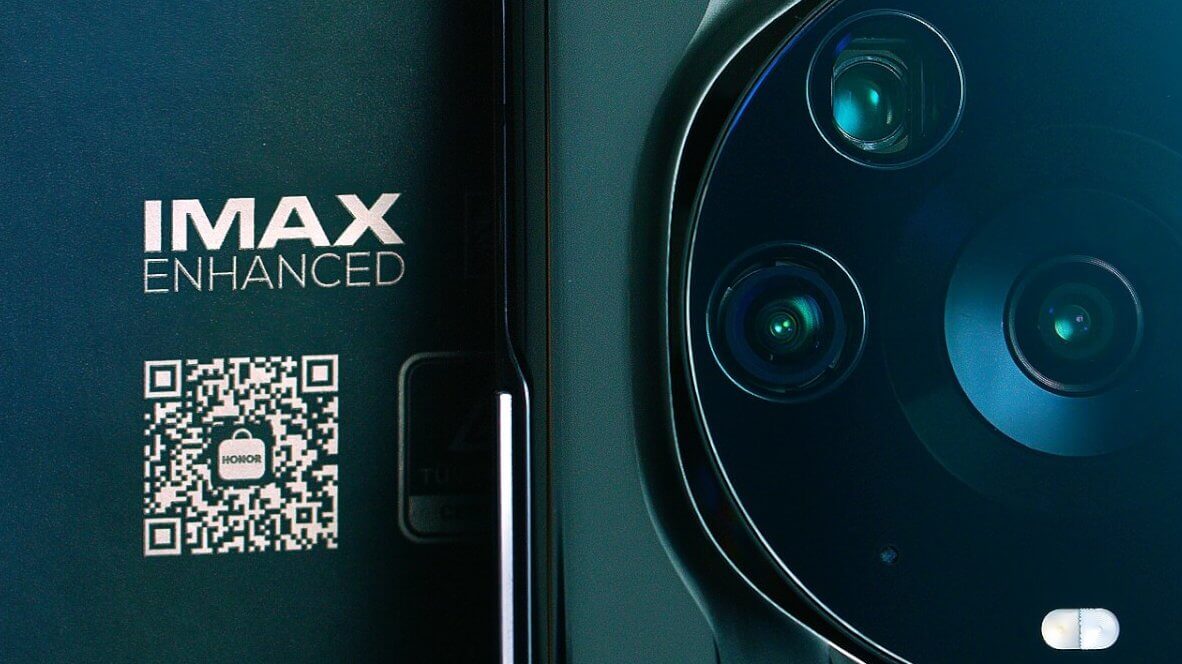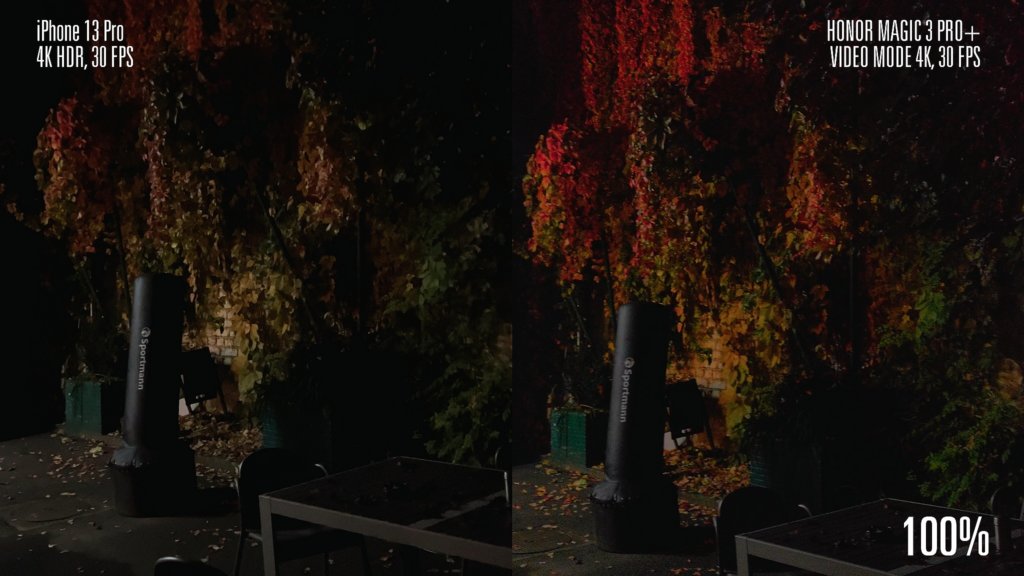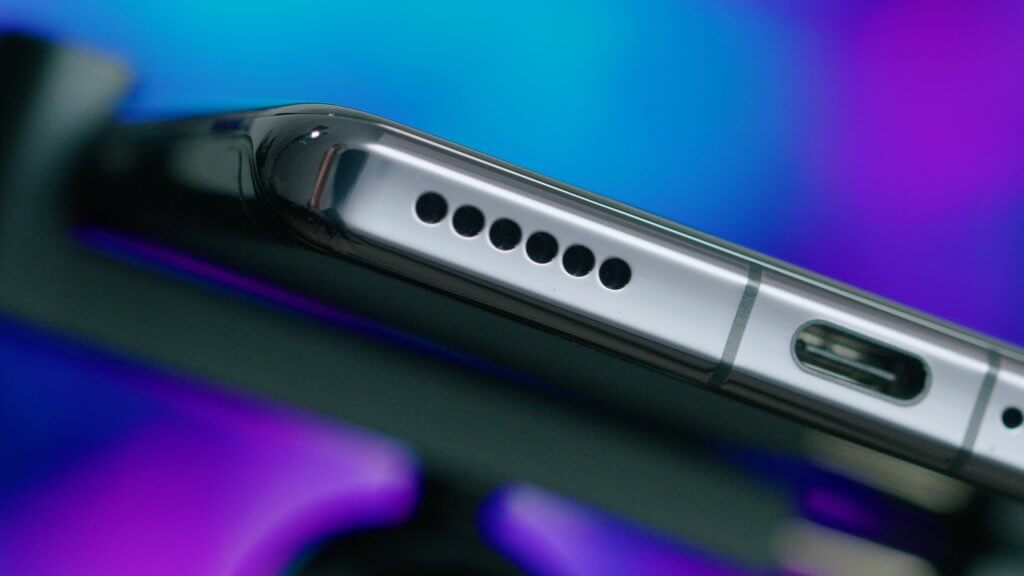Over the last few years, smartphone cameras got to the point where you can shoot a short film or even a full feature film. What happened in the last year and why, what features found on HONOR Magic 3 Pro Plus are game changing when we talk about filming on smartphones and want to achieve more cinematic videos – that’s what I’m going to cover in the Honor Magic 3 Pro Plus video below.
This is not a full review, however. Instead, I will focus mostly on this phone’s video features because I really think that HONOR Magic 3 Pro Plus brings some major shooting modes and styles that can upgrade the final look of the footage.

Honor Magic 3 Pro Plus: What Makes a Cinematic Video?
I think most of you will agree that the definition of “cinematic” has changed over the years.
A video with a cinematic look has to impress viewers with lighting, camera movements, composition and color grading.
So what did HONOR do with its Magic 3 Pro Plus to help us achieve this?
They teamed up with DTS and IMAX, in order to be the first to receive an IMAX Enhanced certification.

Honor Magic 3 Pro Plus: LUTs aka Hollywood-inspired Looks
I don’t know about you, but I have been waiting for some time to be able to shoot with LUTs in the native app of a phone.
LUTs is short for Look Up Tables. In layman’s terms, LUTs are a type of color filters for video. Those are used extensively in movie production but for them to be useful you need, as common practice, 10 bit LOG images as the input to LUT.

LOG is a shooting profile by the way, one that gives a wide dynamic range, looks flat with little contrast and color and so it gives you more freedom to color grade in post-production.
This is key in creating the final look of the video! Here, HONOR tuned the LOG file to a professional level. The level of grading possible with it now is impressive.
The Hollywood-inspired Looks were co-created by HONOR, renowned cinematographer Suki Medencevic and colorist, Bryan McMahan. This is saying something since we’re talking about real people from the Hollywood film industry with IMDB accounts and a very impressive filmography.
Quick advice: to shoot with LUTs you need to enter MOVIE mode. Unfortunately, this mode is exclusive to the main wide camera (23mm f/1.9) because it requires the big and the best sensor from the device and that’s the IMX700(1/1.28) sensor by Sony(with a 1.22um pixel size.)

Each LUT can instantly give your video a different cinematic look. You might find some of them are too creative as I did, so I chose the “CLASSIC” one for most of my shots. In this way I could judge the look when compared with the stock camera and even against the iPhone 13 Pro.
Honor Magic 3 Pro Plus: VIDEO vs MOVIE mode
The difference is quite big when comparing the stock video look with the ones found in MOVIE mode.

OVER-SHARPENING in stock video camera is bad, just as bad as on the iPhone 13 Pro.

Smartphone brands should stop doing this at once, if you ask me. This is the opposite of what cinematic is.
Fortunately, in MOVIE mode HONOR fixed this, and the image doesn’t have that terrible over-sharpening effect.


MOVIE mode offers more details in the shadows, a more gentle gamma curve, better colors and what’s most important, better skin tones.
While shooting in this mode leave the 4K HDR ON, because I found out, after reviewing the video files, that the LUTs are designed for 10-bit footage, and the non-HDR (which are in 8 bit) will have banding in gradients.
During one weekend I went on a road trip to the Bran Castle, commonly known outside Transylvania as Dracula’s Castle, so I took the opportunity to take some shots and put them in a short clip.
All the clips shot there are in MOVIE mode with the Classic LUT in 4K HDR.
Honor Magic 3 Pro Plus: PRO Mode, LOG Profile
Besides the VIDEO mode and the MOVIE mode, you can also shoot in PRO mode where you’ll find all the settings that iPhone users, myself included, are drooling after in the native app.
In this mode, shooting in LOG profile can be enabled. This is the most common shooting profile in video and digital cinemas, regardless of brand, because it can retain the best colors and dynamic range that the digital sensor can provide.
HONOR manages to deliver a very strong 10 bit LOG profile, which can handle heavy color grading.
Here are some examples of what can be done with the footage shot in this flat mode.


Just as in MOVIE mode, the sharpening of the LOG profile is not extreme, the bit rate is high enough to capture lots of data (around 60 MB/s) for better colors and again, I’m going to repeat myself, you’ll find you can get better skin tones.
Honor Magic 3 Pro Plus: Dynamic Range
Dynamic range is another key element in achieving cinematic footage – the higher, the better.
In all video modes, Honor Magic 3 Pro Plus is overexposing, and I had to constantly adjust the exposure. This is very important, by the way, because the highlights are clipped quite fast. The good news is that the shadow area has a lot of detail that is almost impossible to be clipped.

Honor Magic 3 Pro Plus: Video Stabilization
Since the main sensor is a big one, the video stabilization is ok but not great. Engineering-wise, it’s a trade-off when you have to stabilize the lens instead of the sensor, and that’s basically the drawback you have here. Overall, I’d say it’s good enough if you’re not running.
Honor Magic 3 Pro Plus: Low Light Performance
It was a pleasant surprise to see that the noise reduction is not that aggressive. Again, this is another aspect that video and cinema cameras don’t try to eliminate completely.


This is clearly a choice made by engineers, probably against marketing people’s wishes, when tuning the look of the MOVIE mode.
With this approach, they manage to retain more color information and better texture in low to very low light scenes.

Honor Magic 3 Pro Plus: Skin Tones
Probably the most important feature of a cinema camera is how it renders skin tones. For this reason, ARRI cameras are the most used in film productions.
With MOVIE mode, HONOR took a huge leap this year in skin rendition. The phone ticks all the boxes: color, texture, no nasty over-sharpening artifacts.
In my opinion, this is, by far, the best upgrade in the image quality.

Honor Magic 3 Pro Plus: Display and Sound
There are two more features in this device that are pretty important to discuss.
One is the display that has HDR10+ certification and DCI-P3 wide color gamut with high Color accuracy (DeltaE <0.8). This is not only ideal to evaluate the colors of what you are filming, but also to watch online content and movies from streaming platforms on a screen that has very accurate colors.

Speaking of streaming platforms, I think the BEST part of this device is the audio.
I was pleased with the sound coming off from the iPhone 13 Pro, and the upgrade from last year’s model. Then I got to hear what the HONOR Magic 3 Pro Plus sounds like.

Let me tell you, I was shocked by the difference between the two devices.
The range of the speakers found on Magic 3 Pro Plus is impressive, and you know it will be good for almost everything when there’s DTS:X Ultra on board. I’m not the only one to think like this.
In fact, DxO Mark gave this phone 81 points in the audio department, earning top position in the global ranking as well as ultra-premium ranking.

In the end, I think it’s clear that the IMAX Enhanced certification the Magic 3 Pro Plus received is not a just a marketing gimmick. From video acquisition, to the viewing experience on an accurate display and high-quality audio, this Honor phone justifies its flagship status.
What To Do When Movie Theaters Are Closed: Take IMAX Home
IMAX Enhanced Version of Eternals, Available in January on Disney Plus

Honor Magic V: Everything We Know So Far About The Upcoming Foldable
How to Watch Shang-Chi in IMAX Enhanced on Disney Plus
Follow TechTheLead on Google News to get the news first.






















